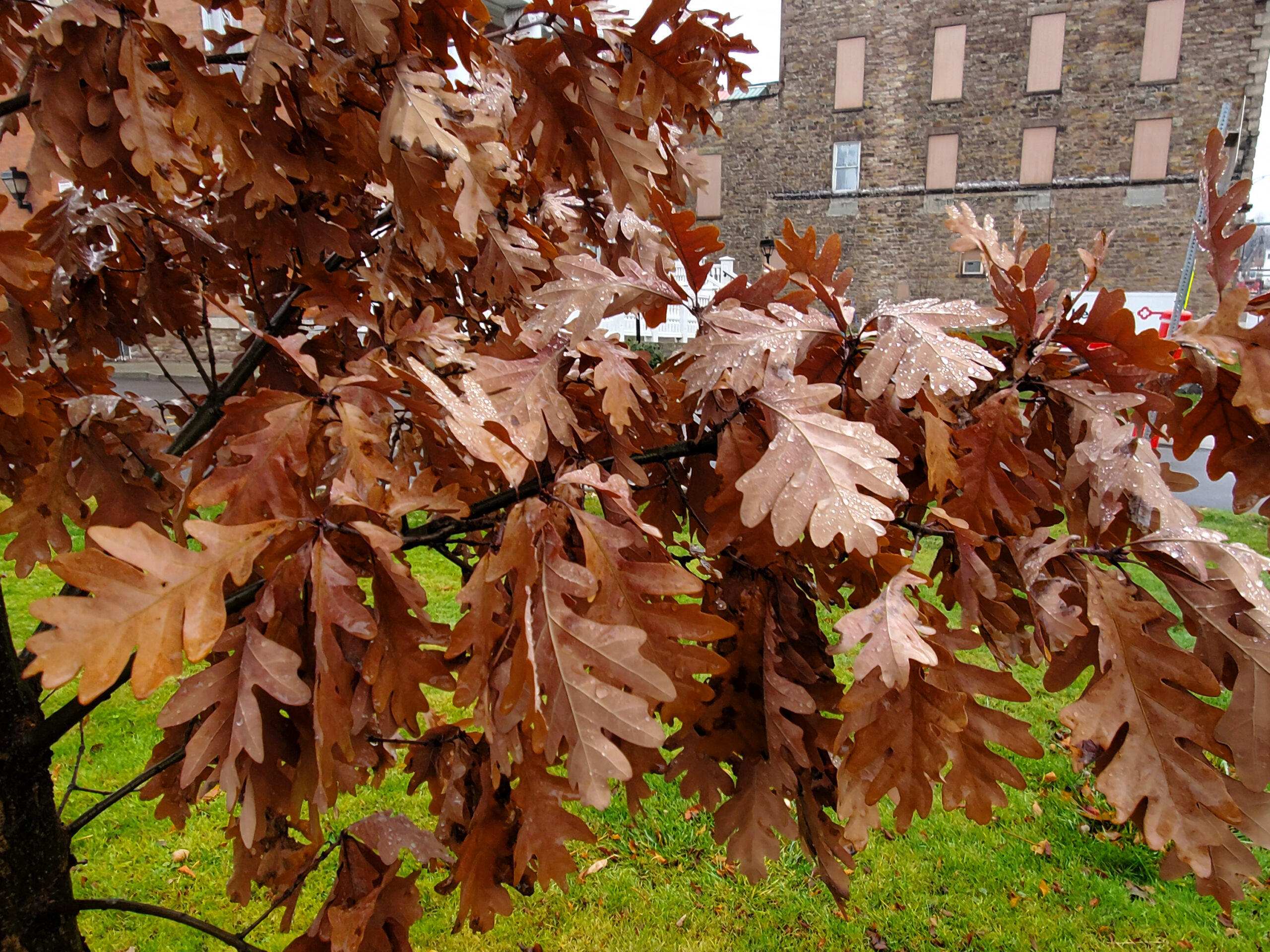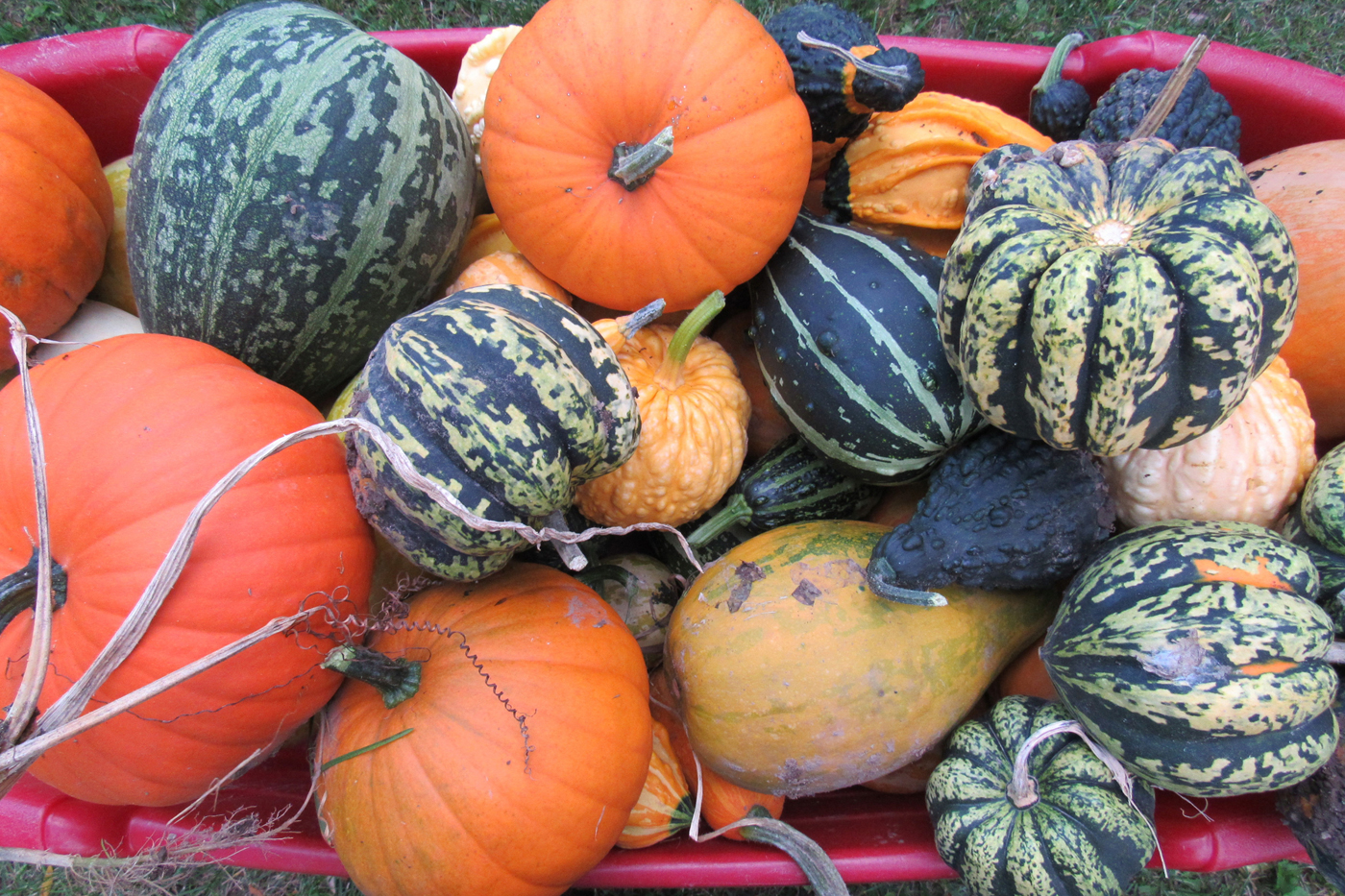Marcescence

More and more, I am learning to appreciate the lines and textures that become prominent in the landscape during winter. The bright colors of summer and autumn have long faded, but the backbone of the landscape remains, and it can be quite beautiful and compelling whether dusted with snow or left bare. Even the stalks of dead and faded perennials, especially those with seed heads, can add interest.
You may have noticed, particularly after a snowfall, that some deciduous trees continue to hold onto their faded leaves. In fact, there are a number of trees that sometimes don’t drop their leaves until spring: oaks, American beech, Eastern hop hornbeam, hornbeam, and witch hazel all can display what is called “marcescence” (pronounced “mar-CESS-enss”). This fun word comes from the Latin marcescere, which means “to fade.” Young trees, in particular, and lower limbs of older trees display this characteristic of retaining their dead leaves well into winter.
According to the University of Maryland Extension, most deciduous trees drop their leaves in autumn, when the cells between the twig and the end of the leaf stem create what is called an abscission layer. The cells separate from each other, and the leaf falls from the tree. In marcescence, abscission doesn’t occur until spring.
Scientists aren’t certain why this happens, but there are theories as to why a tree would wait several months to drop its leaves. Some believe it provides a fresh layer of mulch around the tree to help add nutrients for growth in the new year. Oaks and beeches are often found in dry and infertile sites, and this would be especially beneficial to them. The late-falling leaves might also help conserve soil moisture in spring by adding some shade to the forest floor before trees have leafed out.
Other scientists believe marcescence may be a way the trees protect themselves from wildlife. Tree limbs with dry, unappealing leaves might deter browsers such as deer who are looking for tender, nutritious buds and twigs. The dried overwintering leaves help hide new growth and protect buds until spring.
When spring does come, the growing buds push the old, dead leaves off, and the tree is soon covered in new greenery.
Whatever the reason, you might want to consider these trees for your landscape. They are natives, which are beneficial to the landscape and will help provide year-round interest in your yard. I have noticed in gardening magazines that formal plantings in England often include beech hedging, which retains its leaves throughout winter. This is used as a way to add interest, color, and texture to the garden during the dormant season. The leaves add contrast to evergreens and garden hardscapes, including sculptures, bare-branched shrubs, trees, and other garden structures. The dried leaves can also add sound to the landscape when the wind blows.
As you study your landscape this winter, it is a good time to consider ways to add interest for those long months as gardeners wait for the excitement of spring to arrive.




